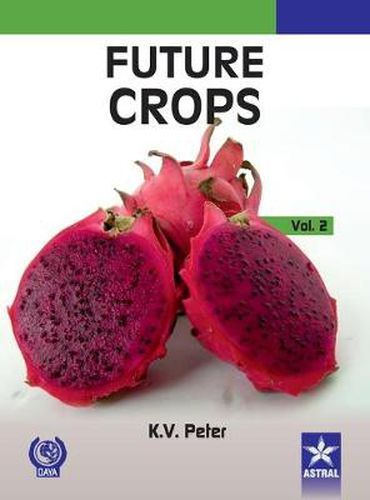Readings Newsletter
Become a Readings Member to make your shopping experience even easier.
Sign in or sign up for free!
You’re not far away from qualifying for FREE standard shipping within Australia
You’ve qualified for FREE standard shipping within Australia
The cart is loading…






This title is printed to order. This book may have been self-published. If so, we cannot guarantee the quality of the content. In the main most books will have gone through the editing process however some may not. We therefore suggest that you be aware of this before ordering this book. If in doubt check either the author or publisher’s details as we are unable to accept any returns unless they are faulty. Please contact us if you have any questions.
Future Crops Vol. 2 expositions plants presently underexploited but with considerable economic value as vegetable, fruit, spices, ornamentals, medicinal plants and industrial crops. Future horticulture is challenging as space, water and energy are limiting factors. New life styles, migration both inter and intra country and innovations in processing into value added products would demand hitherto unknown plants to become crops of commerce and trade. The volume 2 deals with aquatic vegetables, aquatic weeds as potential future crops, underutilized fruits of arid zone, underutilized and lesser known fruits of Mizoram, underutilized Spices, cactus pear, camelina, castor bean, cistron, Delphiniums, Embelia ribes, Jujube, Hamun lasoda, mappia, palmyrah, Salacia oblongs, Saraca Asoca and water chestnut. Future agriculture and horticulture have to be elastic to face effects of climate change, pressures of biotic and abiotic stresses including industrial pollution and induced salinity due to sea water intrusion. Fifty working scientists from research institutes of ICAR and CSIR have contributed to the present volume. The two chapters on aquatic plants are included after considerable debate on prospects of water bodies to grow these crops and their potential as raw material for food, deed and energy. Water chestnut is dealt separately considering its habitat as fresh water bodies.
$9.00 standard shipping within Australia
FREE standard shipping within Australia for orders over $100.00
Express & International shipping calculated at checkout
This title is printed to order. This book may have been self-published. If so, we cannot guarantee the quality of the content. In the main most books will have gone through the editing process however some may not. We therefore suggest that you be aware of this before ordering this book. If in doubt check either the author or publisher’s details as we are unable to accept any returns unless they are faulty. Please contact us if you have any questions.
Future Crops Vol. 2 expositions plants presently underexploited but with considerable economic value as vegetable, fruit, spices, ornamentals, medicinal plants and industrial crops. Future horticulture is challenging as space, water and energy are limiting factors. New life styles, migration both inter and intra country and innovations in processing into value added products would demand hitherto unknown plants to become crops of commerce and trade. The volume 2 deals with aquatic vegetables, aquatic weeds as potential future crops, underutilized fruits of arid zone, underutilized and lesser known fruits of Mizoram, underutilized Spices, cactus pear, camelina, castor bean, cistron, Delphiniums, Embelia ribes, Jujube, Hamun lasoda, mappia, palmyrah, Salacia oblongs, Saraca Asoca and water chestnut. Future agriculture and horticulture have to be elastic to face effects of climate change, pressures of biotic and abiotic stresses including industrial pollution and induced salinity due to sea water intrusion. Fifty working scientists from research institutes of ICAR and CSIR have contributed to the present volume. The two chapters on aquatic plants are included after considerable debate on prospects of water bodies to grow these crops and their potential as raw material for food, deed and energy. Water chestnut is dealt separately considering its habitat as fresh water bodies.